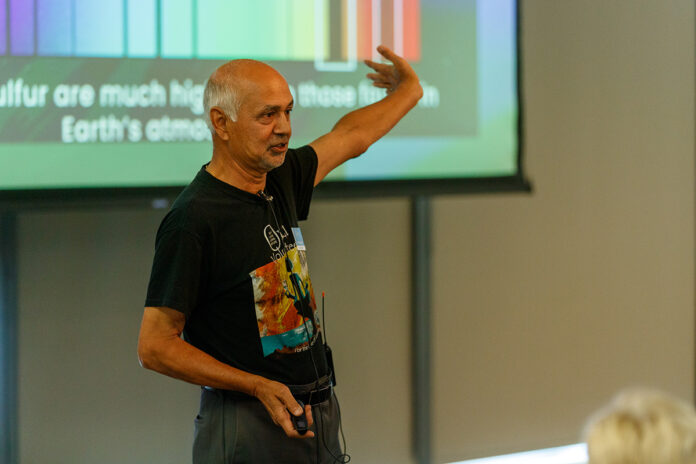Shri Srikanth, Ph.D., a frequent speaker and presenter at Yavapai College’s Osher Lifelong Learning Institute, shared a presentation on “The Magnificent Universe as Revealed by the Hubble and James Webb Space Telescopes ” during OLLI’s April 28 Brown Bag program.
Srikanth discussed the universe and our planet’s place in it as visualized through images from both the Hubble and James Webb space telescopes, which he described as the two most important tools for viewing the universe.
The Hubble Space Telescope was launched into low earth orbit in 1990. It images in the visible and near-infrared spectra . Although designed for an operational life of 15 years, it continues to operate after more than three decades. NASA has conducted six maintenance missions to the telescope, which is accessible for repairs due to its low orbit.
The James Webb Space Telescope is Hubble’s successor, launched into a halo orbit around the L2 Lagrange point in 2021, where it is shielded from the sun and gravitationally-balanced to minimize the need for repositioning.
Srikanth stated that the telescope is currently working better than expected and will likely be able to operate for 25 years or more.
JWST was designed to look at very distant stars and galaxies at near- and mid-infrared wavelengths and have the ability to perform detailed spectroscopy in order to determine such stellar and planetary characteristics as temperature, mass and age. As an infrared imager, its photographs must be processed in order to render them visible to the human eye.
One of Hubble’s more famous images was a deep field view of the SMACS 0723 galaxy cluster later retaken by the JWST. Srikanth compared shots of the cluster taken by both telescopes. As the JWST has a much larger mirror for detecting light, its version of the deep field was significantly sharper with more detail and clarity.
Srikanth shared a tip for determining whether an image was taken by Hubble or by the JWST. If a star is surrounded by four diffraction spikes in an image, the shot came from Hubble; if it shows six diffraction spikes, the image came from the JWST. Stars appear to have spikes while galaxies do not due to gaseous diffusion in the latter.
Other images that Shrikanth discussed included shots of a young star that showed up in shades of orange and blue when color-corrected, and of a globular cluster, a dense mass of tightly packed stars of comparable age, in the Milky Way.
Srikanth emphasized that the JWST’s images are computer-derived amalgamations of different wavelengths invisible to humans that aim to show as much information as possible. He illustrated the point with various images of the Crab Nebula, which is the remains of a supernova, and discussed the varieties of nebulae and their descriptive names, including the Lemon Slice, Monkey Head and Stingray nebulae. Nebulae may be created by the death of stars or by the condensation of interstellar gas, and often become nurseries for new generations of stars.
Srikanth also discussed the Cartwheel Galaxy, which is thought to have formed from a high-speed collision between two separate galaxies about 400 million years ago. It has red hues caused by glowing, hydrocarbon rich dust and is composed of two rings, an inner and an outer.



